‘Murder Hornets’ Japanese Giant Hornet Vespa mandarina
(NB. nothing to do with hornets in the UK or Europe)
The arrival of invasive Japanese Giant Hornets in Washington (NW USA) and Canada in spring 2020 (and possibly 2019) caused panic, and resulted in the press having a field day describing them as ‘Murder Hornets’. They happen to be the largest hornets in the world (of 25 species known from the tropics and temperate regions) and are about 45mm long with a large and completely yellow head. Quite distinctive. They are NOT found in Europe but as the name suggests they are native to Japan. They are not native to the Americas and therefore there are no natural predators to control their numbers. Their main food is honeybees, and they can kill a colony within a day or so, eating the larvae and adults as their supply of protein. They are likely to predate on many other insects as well, thus decreasing biodiversity. To put all this in context, like any hornet, wasp or honeybee, a single sting can kill, but they do not go out of their way to kill people. Their sting contains deadly neurotoxins. A lot of people are terrified of any insect that makes a buzzing sound, and it fits that category. If you get in their way, or attack them they will attack. People are right to be worried, but they should not try to kill or swat them. Get a beekeeper to investigate or a professional pest controller. Remember there are no ‘Murder Hornets’ in Europe or the UK. ‘Murder hornets’ will continue to have a bad press.
Asian Hornets
Asian Hornets have become a menace to honeybees in Western Europe in the last ten years, arriving in Western France and spreading out north, south and eastwards into Europe, and westwards in the Channel Islands in 2016 and 2017, and now becoming resident or naturalised in there in 2018. They have appeared in England and Scotland in the last two years and now present a major threat to honeybees and beekeeping, as well a major threat to biodiversity since they eat many other insects including pollinators. There are no known predators for this invasive insect. see QUIZ below
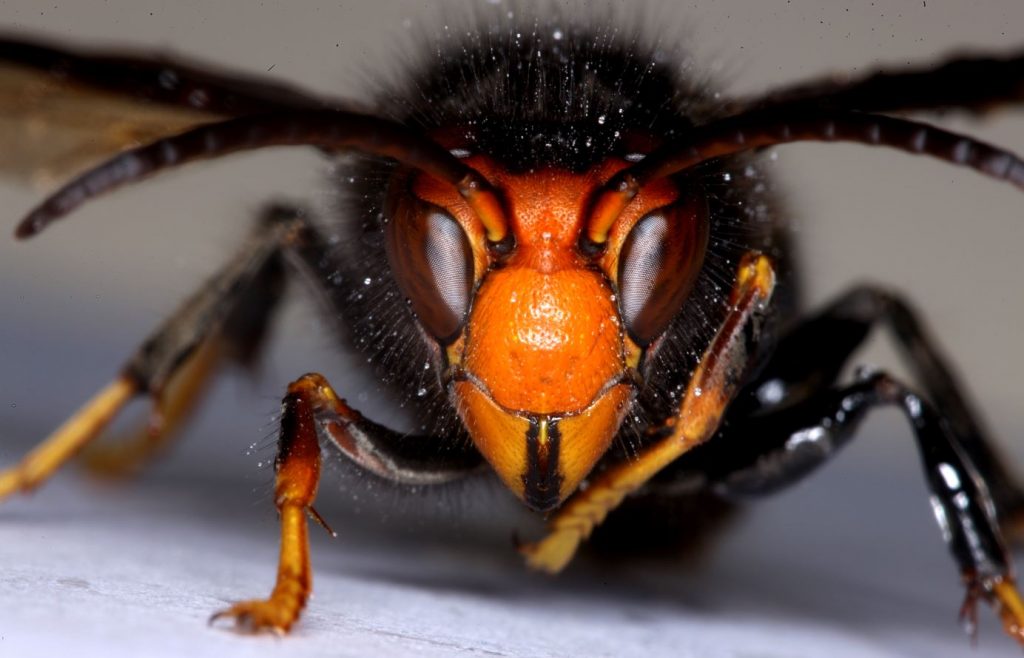
see below for more images to help identification
Publications on Asian Hornet by John Feltwell 2016-2019
Feltwell, J. 2016. Identification features of the Asian Hornet. BBKA News March 2016. 81-83
Feltwell, J. 2017. Review of Asian Hornet removal methods in Jersey in October 2017. Unpublished notes of visit to the island.
Feltwell, J. 2017. The arrival of the Asian Hornet Vespa velutina Lepeletier, 1836 into the UK in 2016. Antenna 2017:41(2) 59-64.
Feltwell, J. 2018. Asian Hornet: 2017. BBKA June 2018 pp194-197.
Feltwell, J. 2019. Preventing the Decline of Bees in Britain. BBKA January 2018. p26 (passing reference to AH)

Photographs to help with identification
The identification of Asian Hornets is difficult for an insect that most people have never seen. One might be accustomed to the European Hornet in the apiary, but the Asian Hornet is very roughly the same size, darker with specific yellow- orange markings. It makes a sound like a bumblebee and can be seen on flowers and fruits (especially in the autumn) as well as in the apiary.
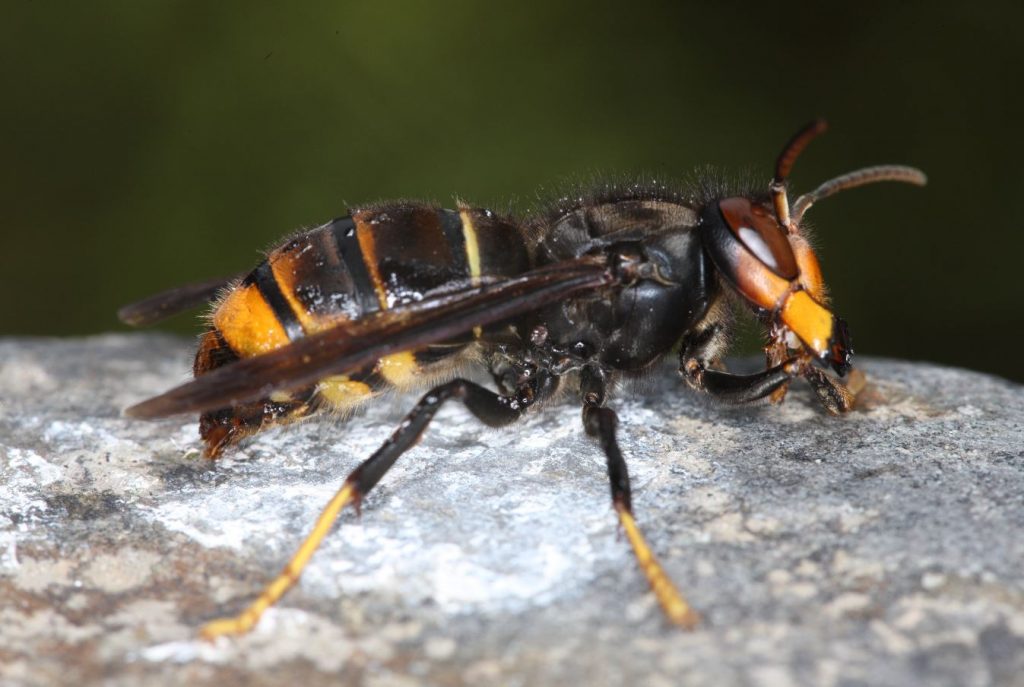
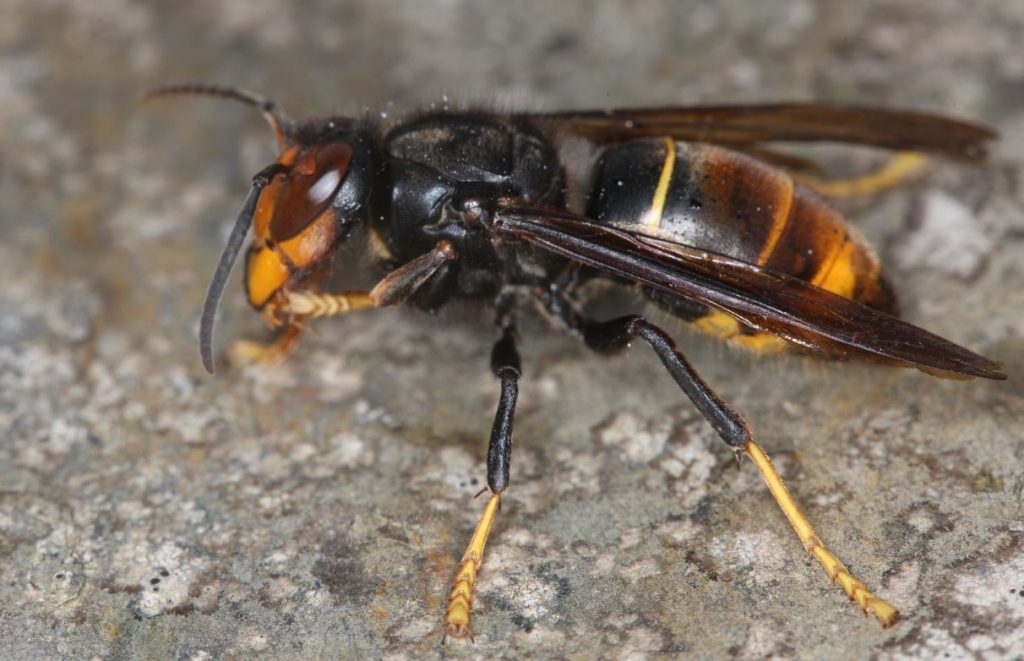
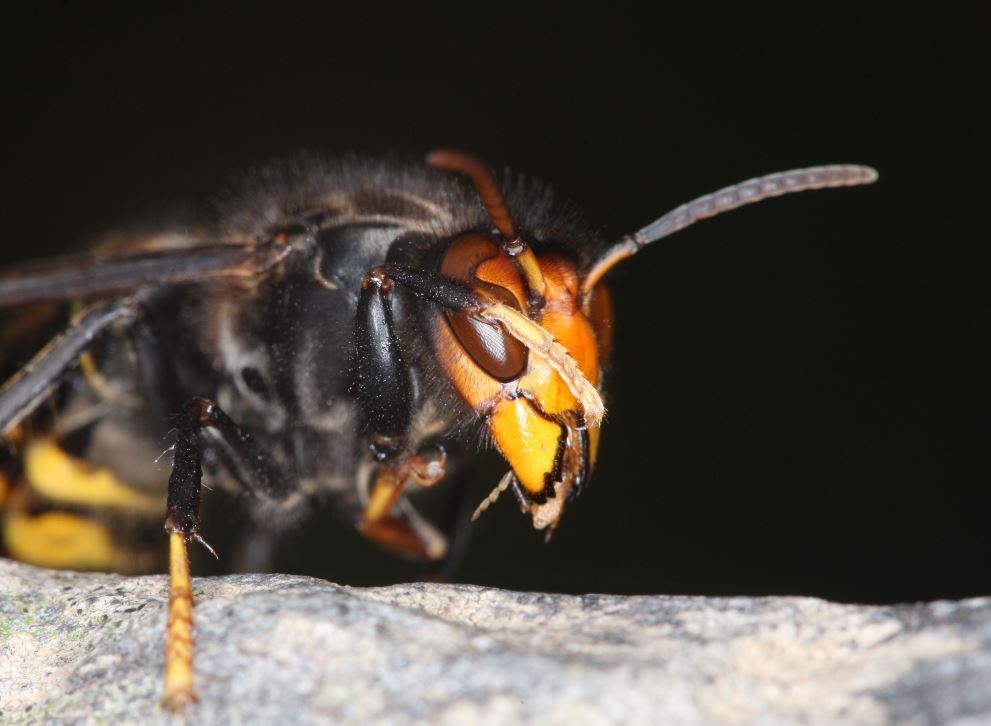
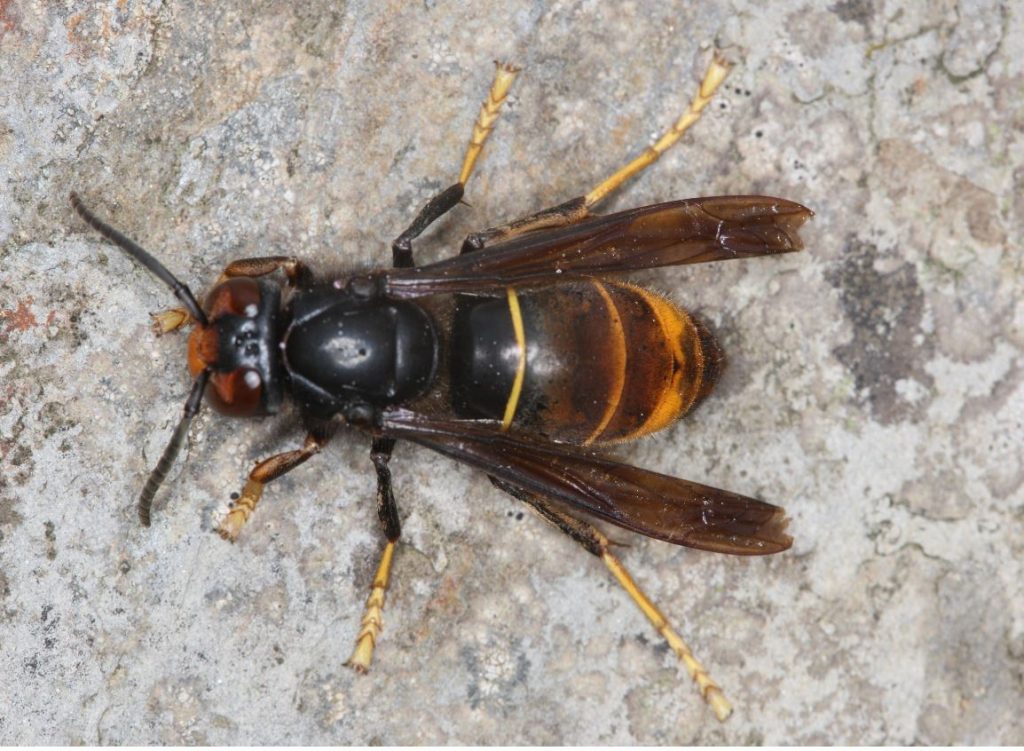
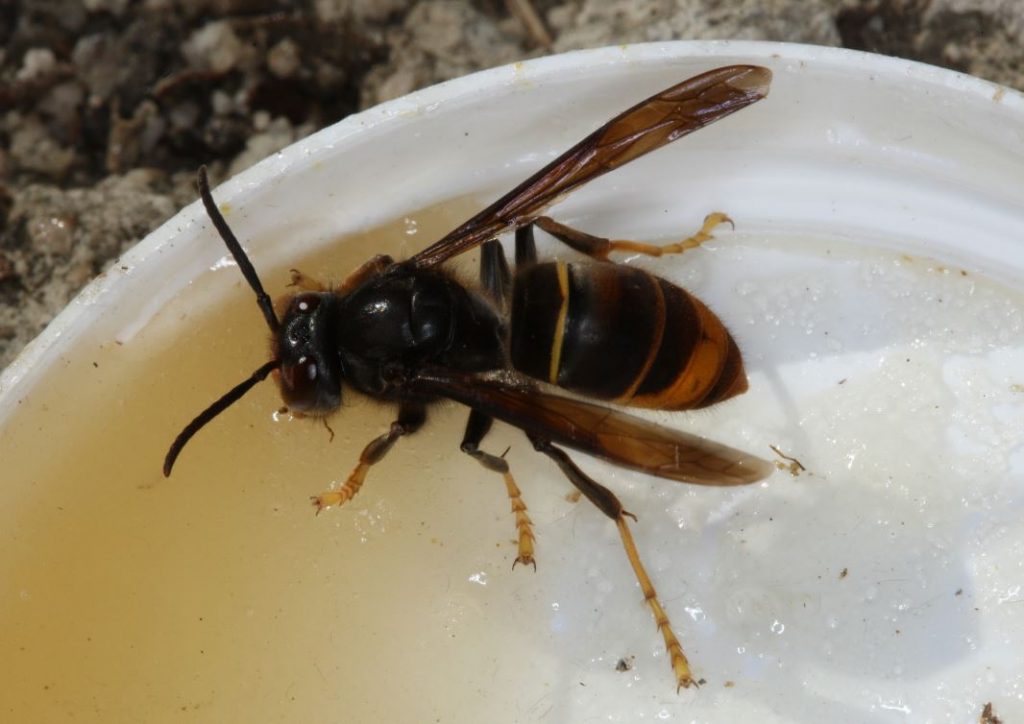
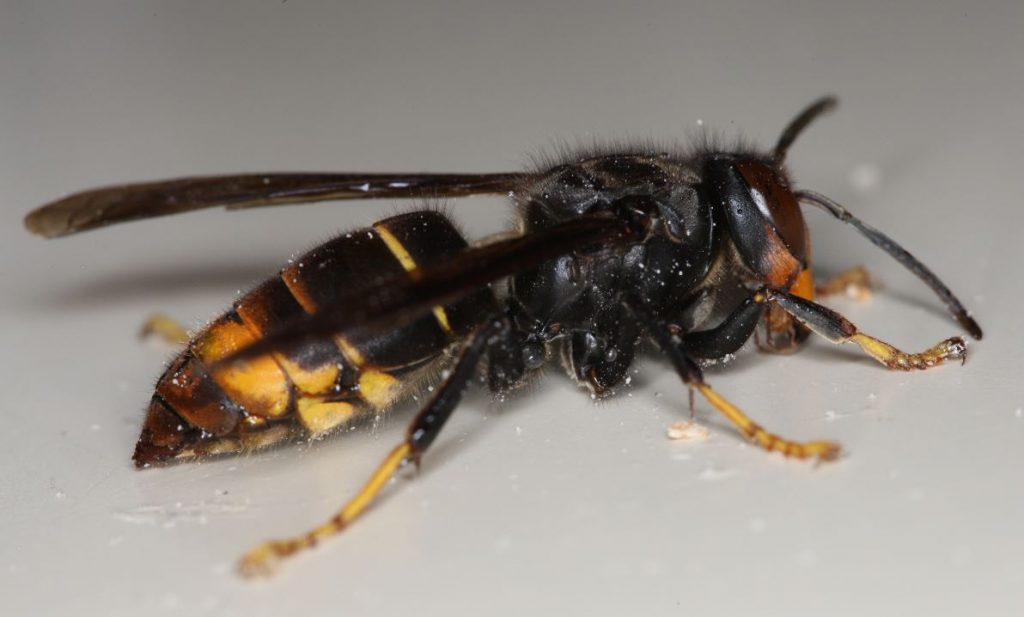
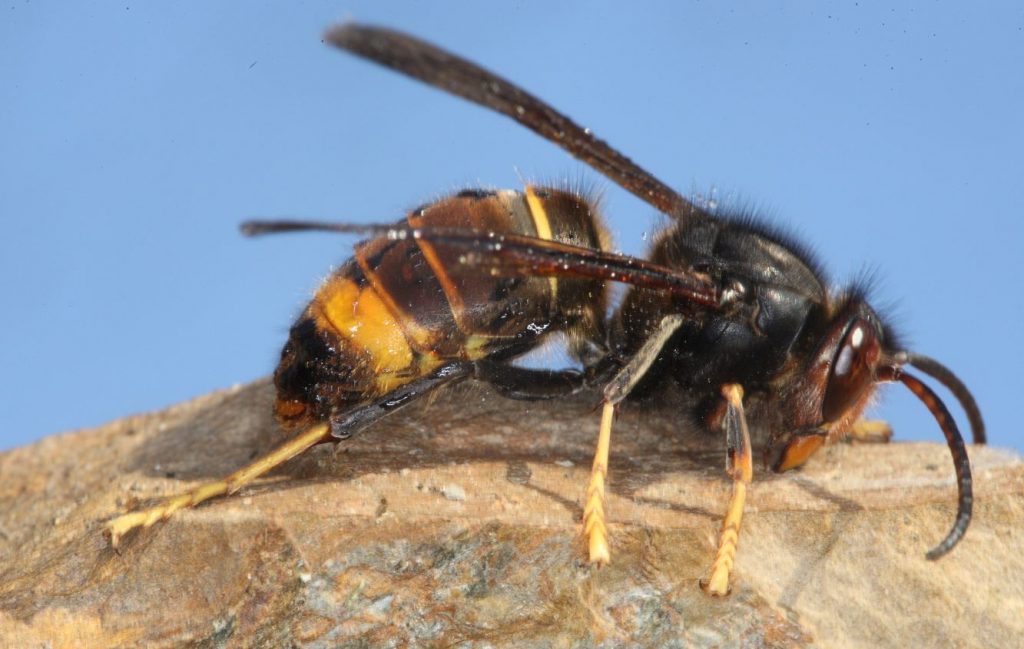
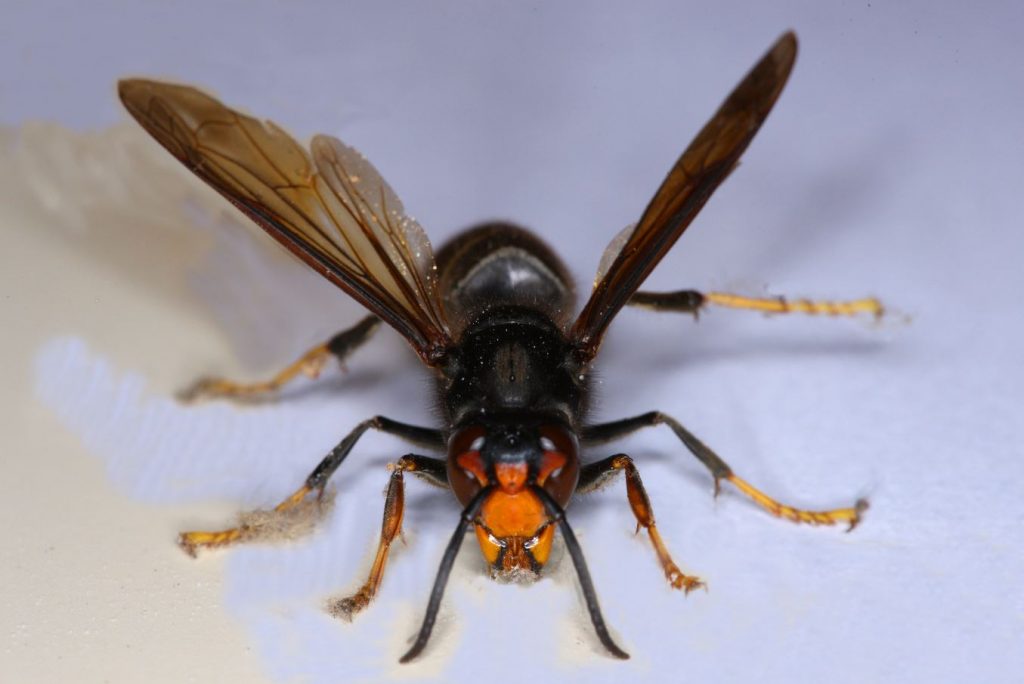
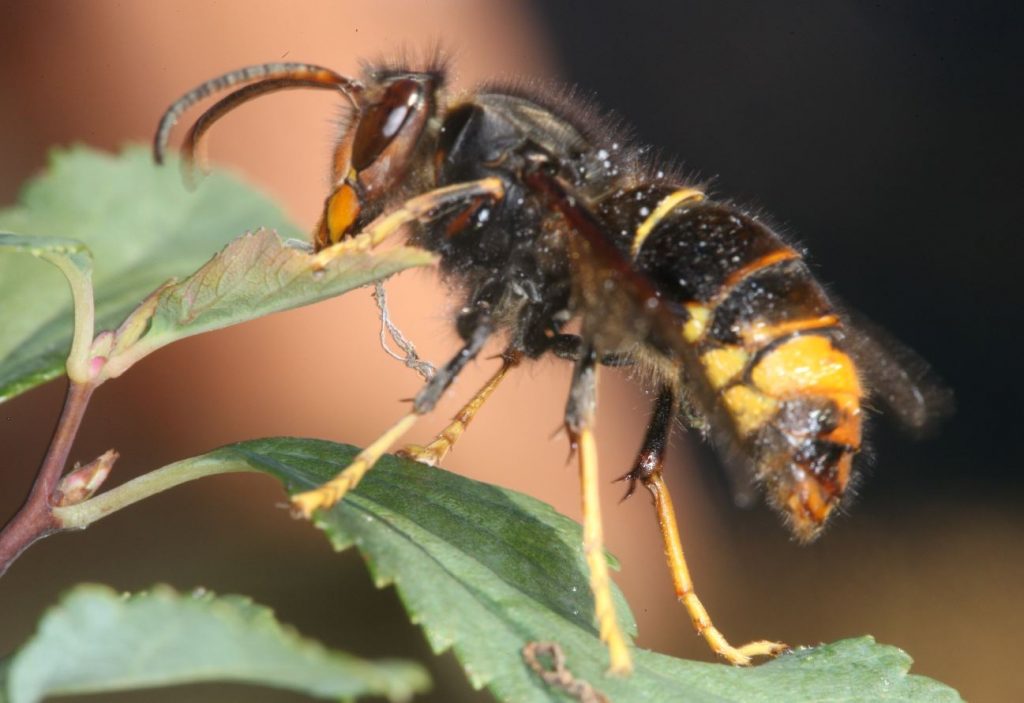
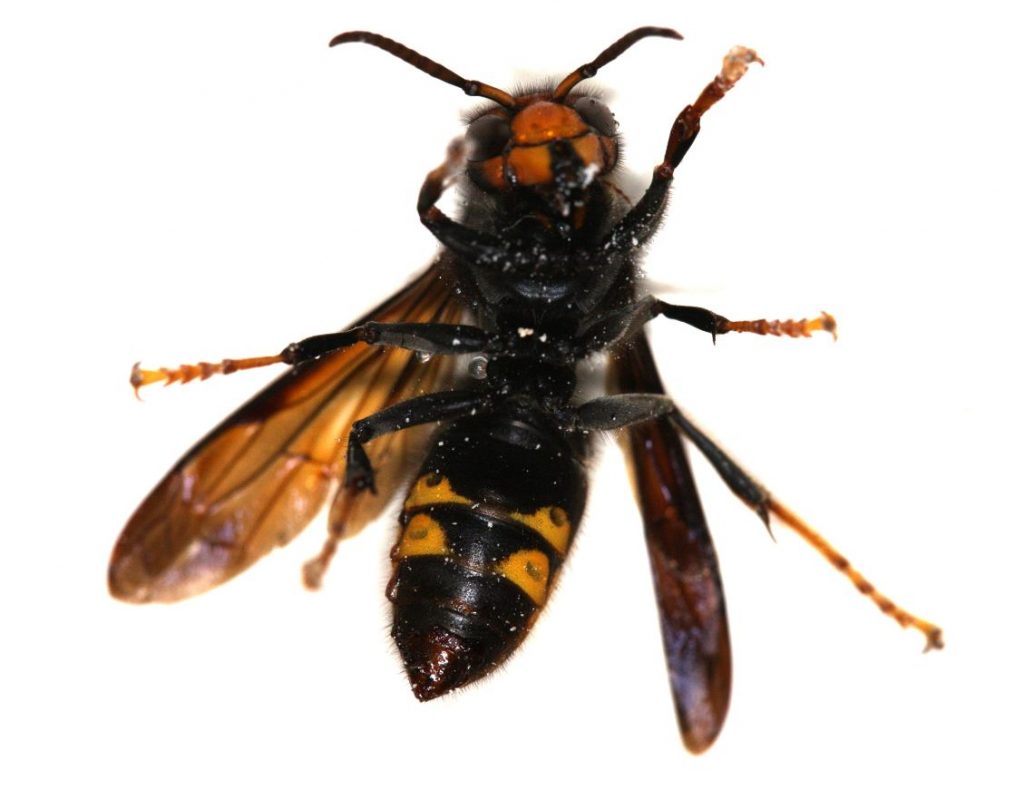
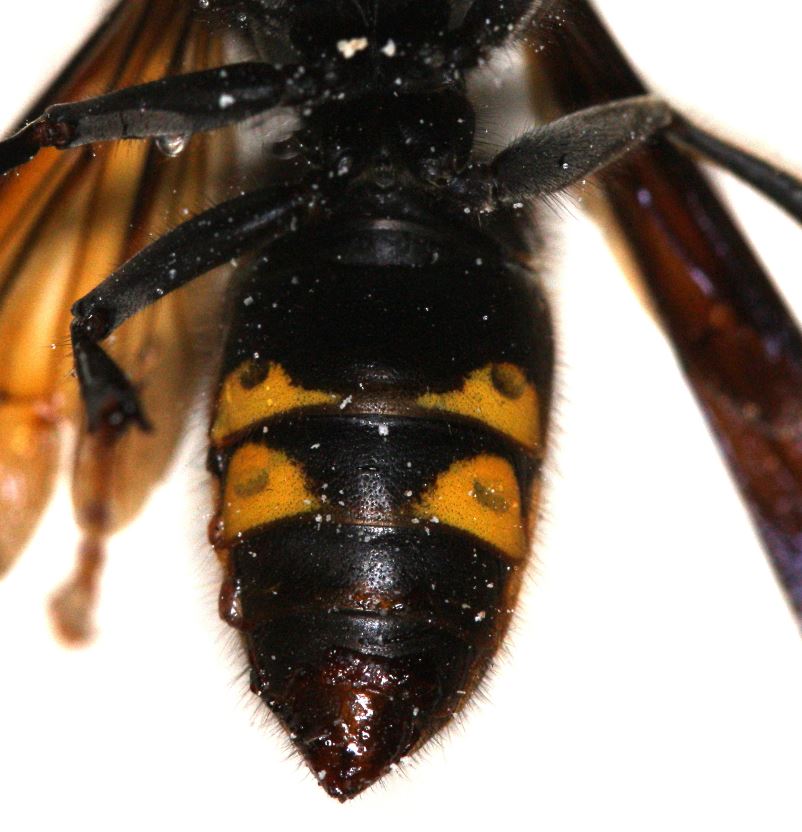
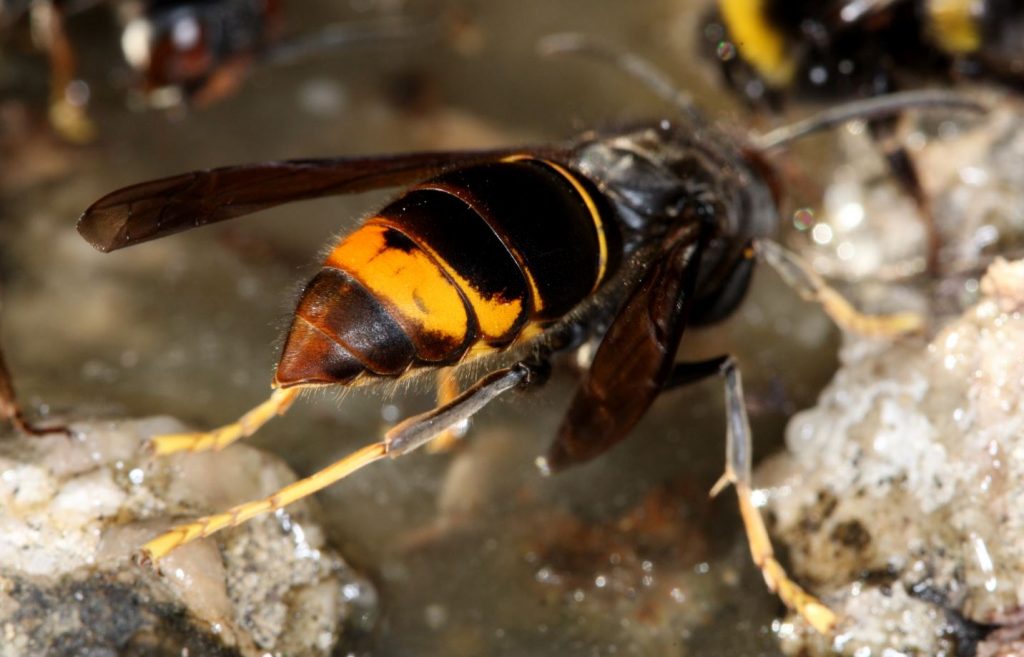
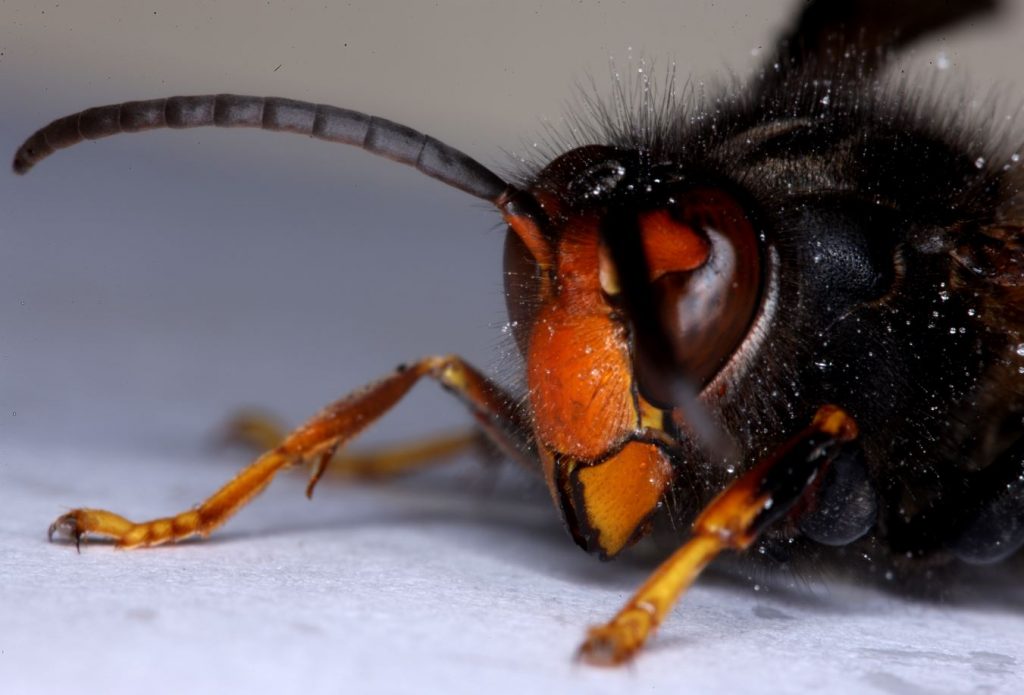
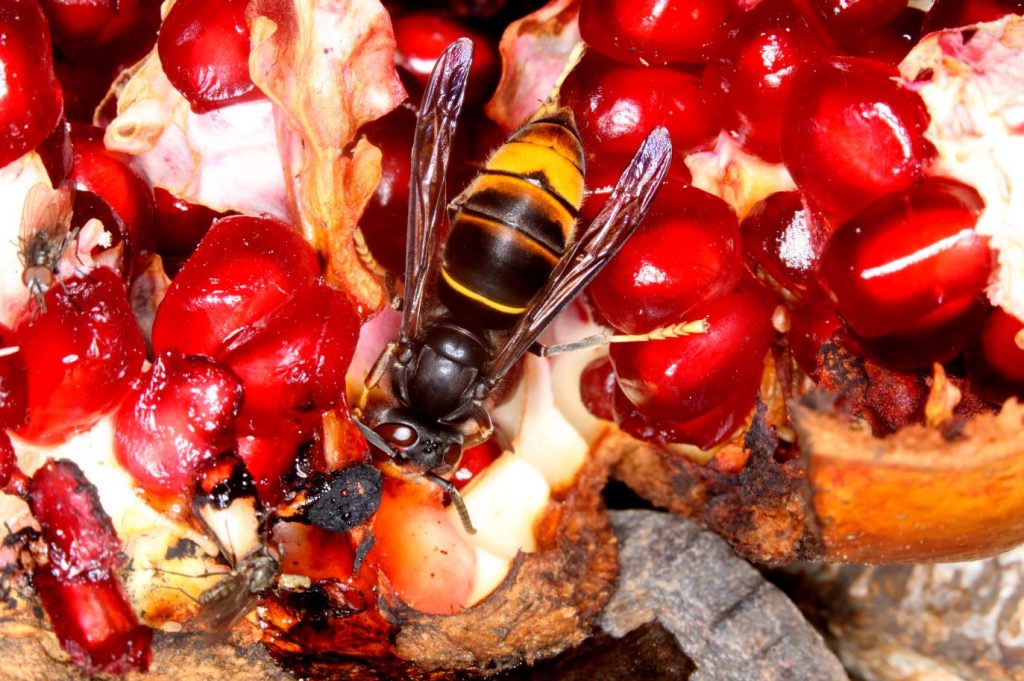
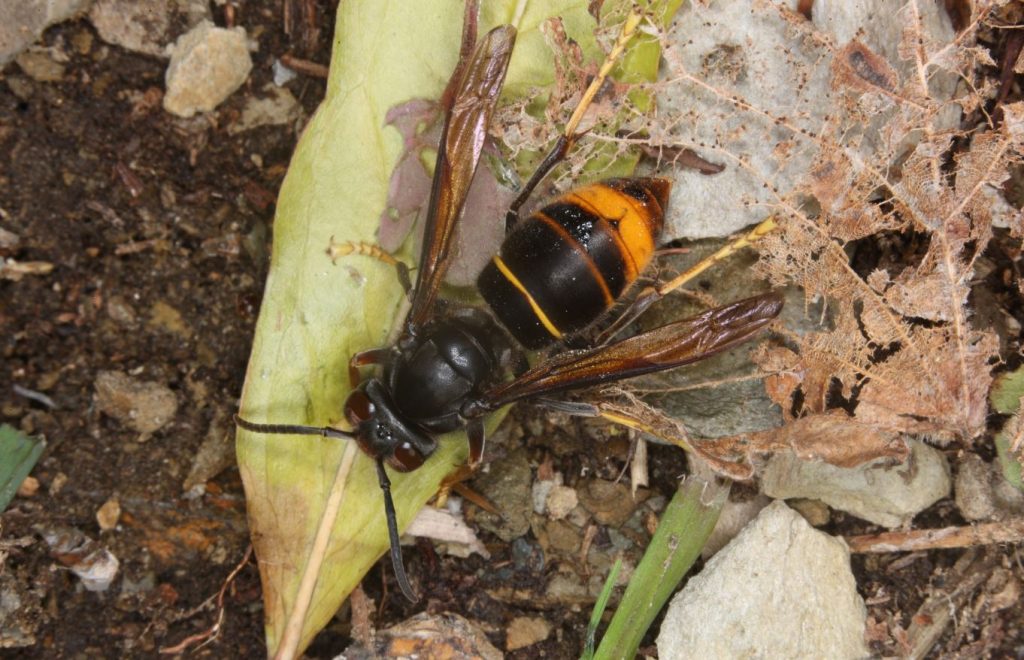
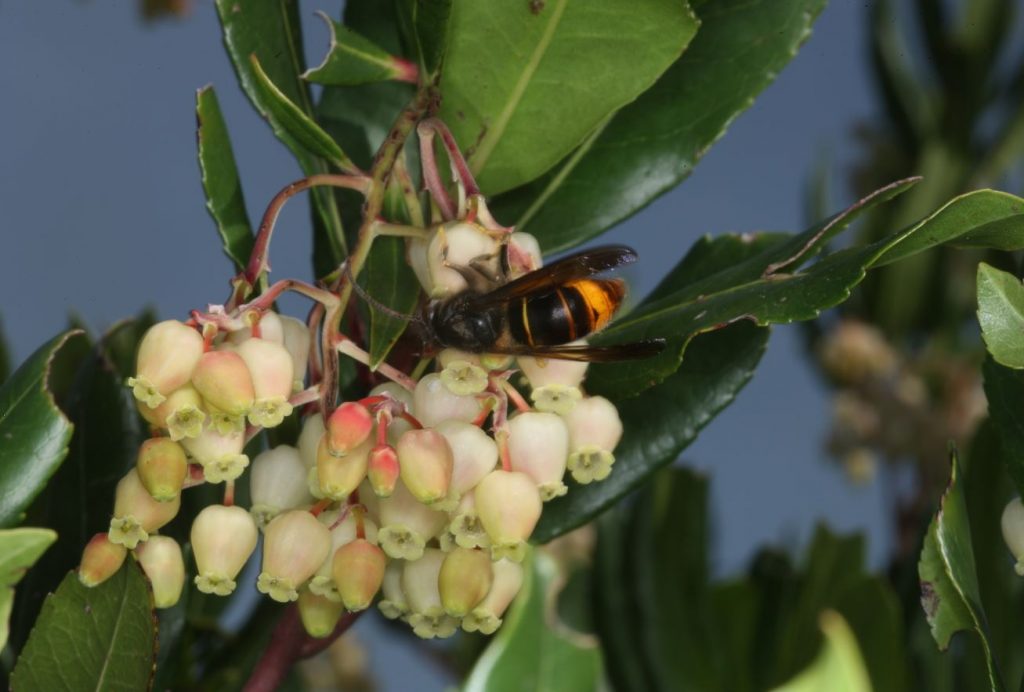
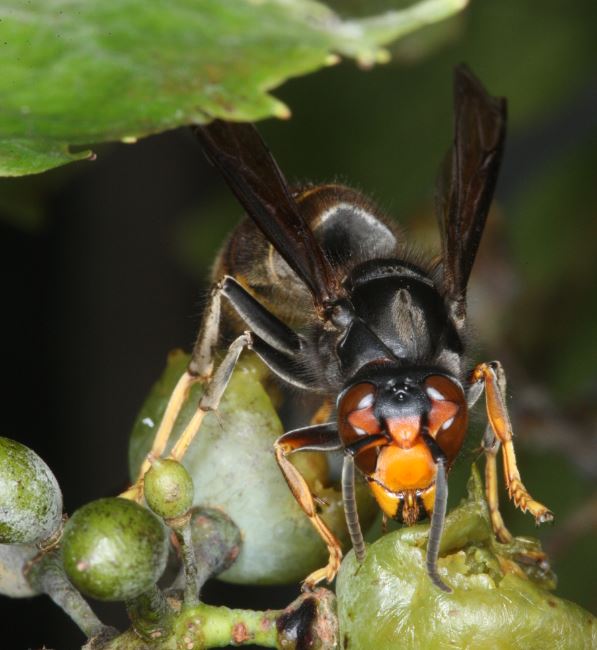
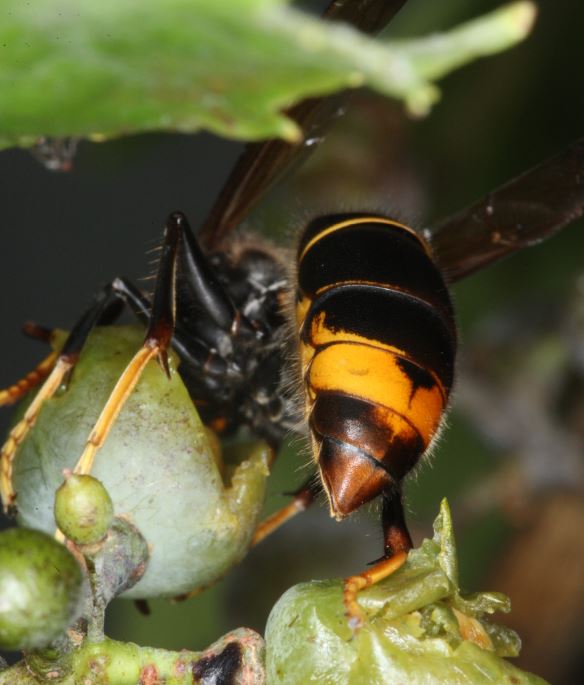
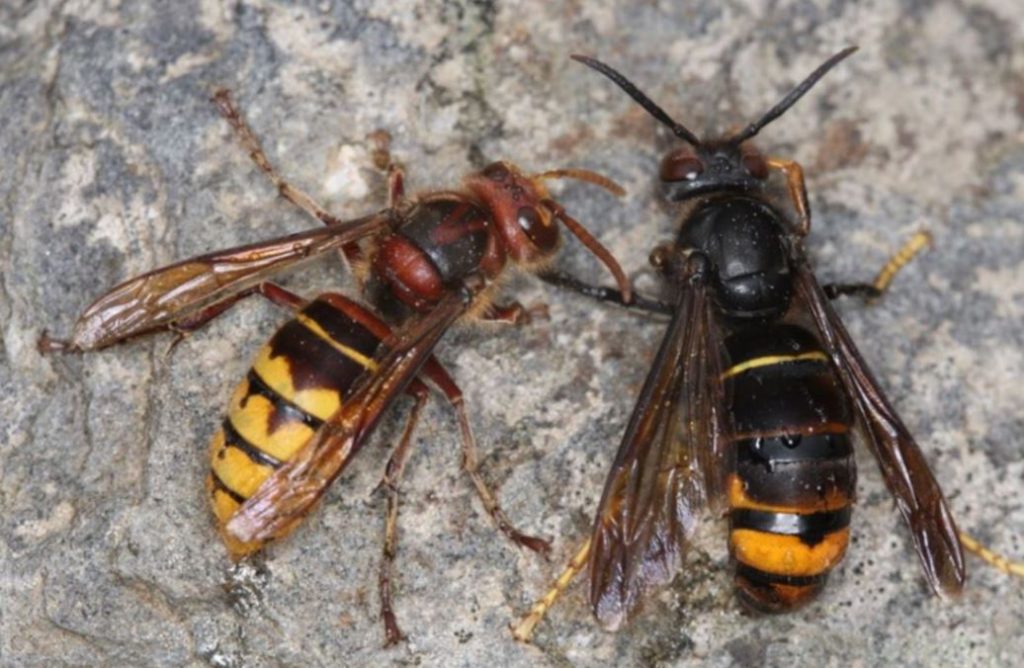
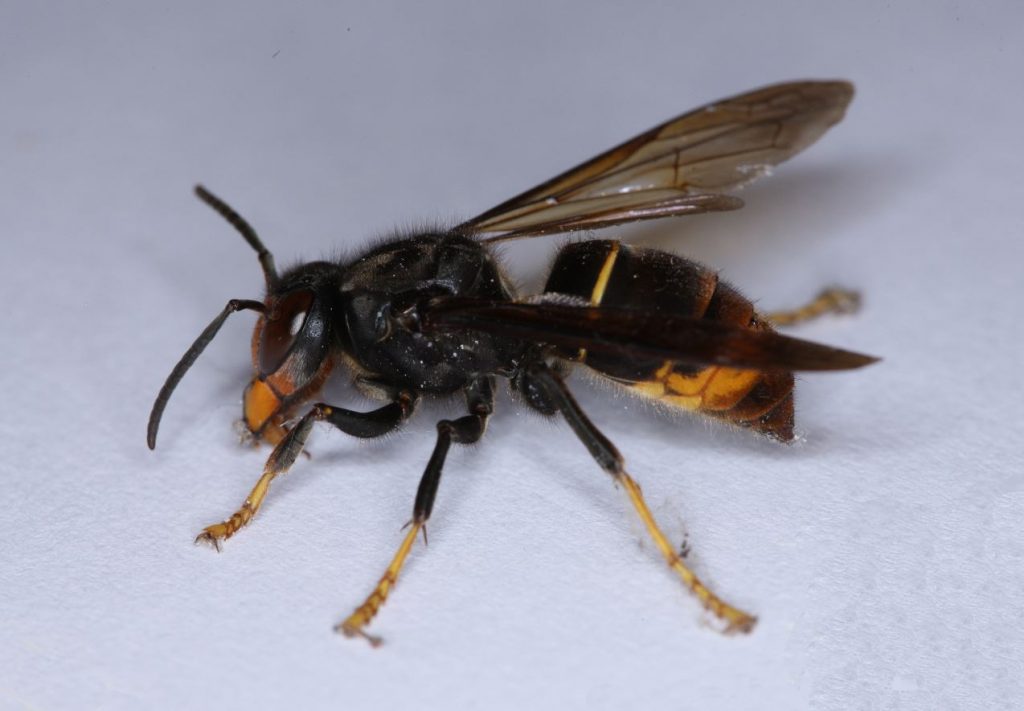
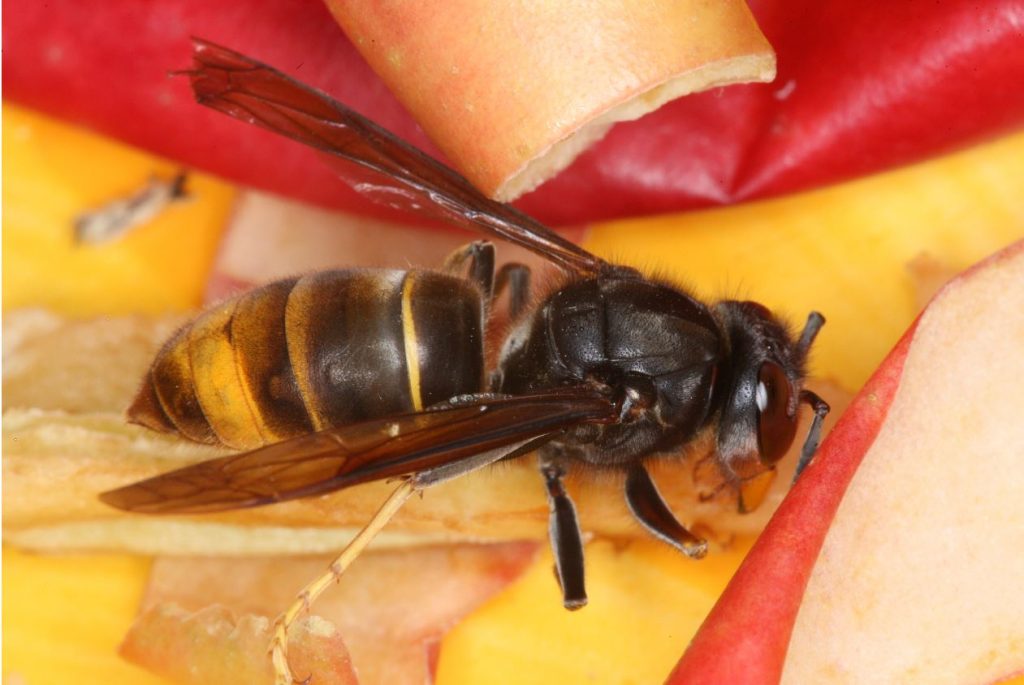
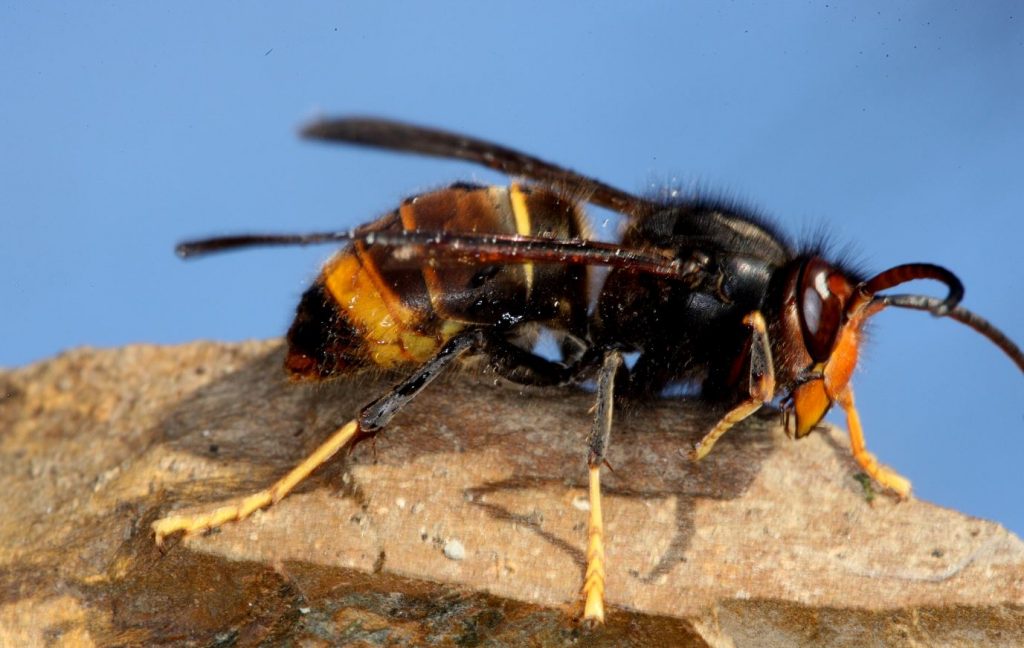
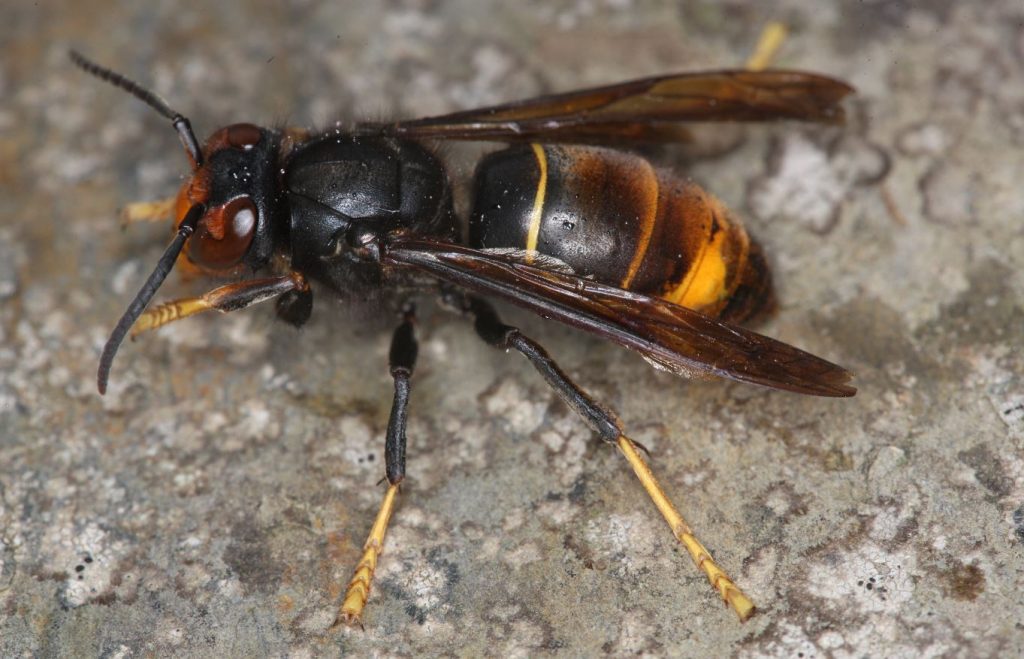
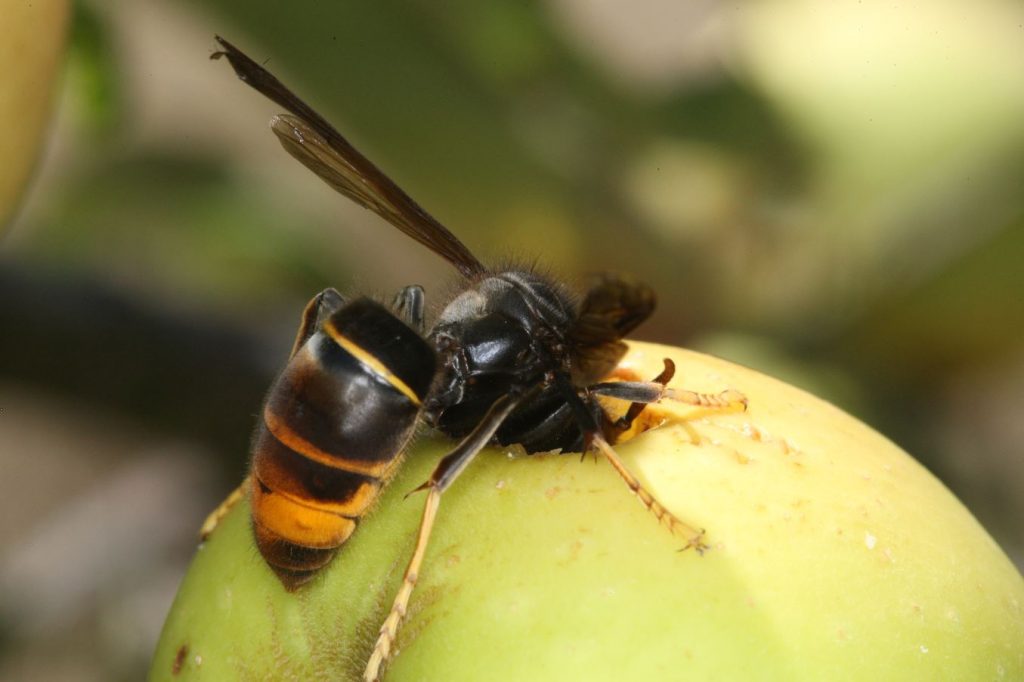
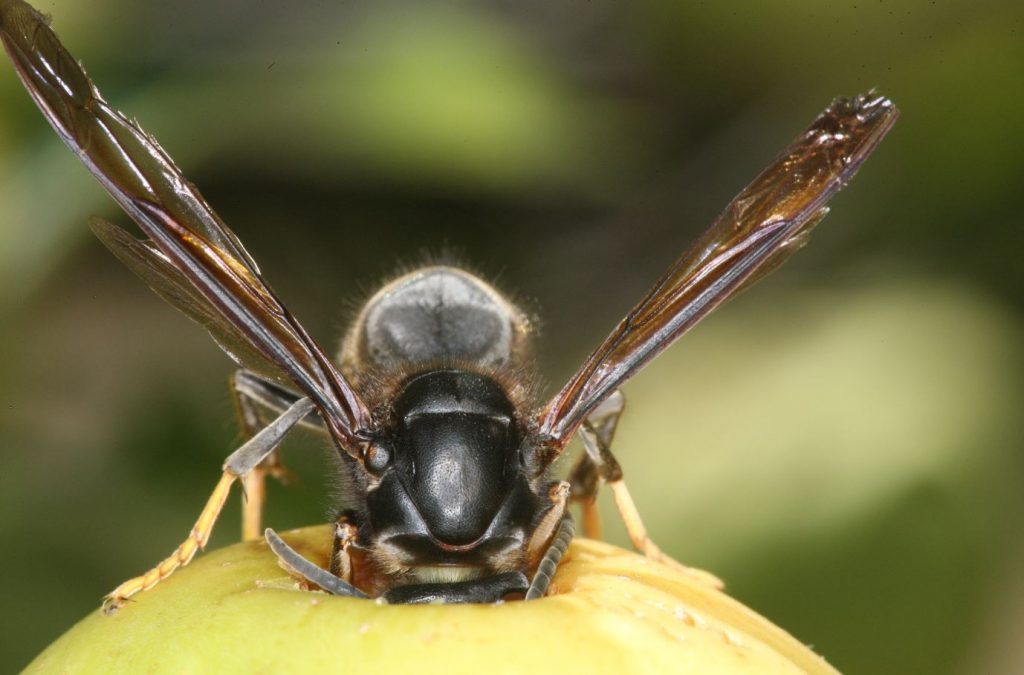
CONTROL & MONITORING – In order to control Asian Hornet you need to know more about its presence and population size. There are various attractants, or lures, for sale in the UK and in France, which have a liquid that attracts ‘wasps and hornets’. This is dispensed in a small container protected from the rain, with open access to the weather. The idea is to attract or trap Asian hornets depending on what you want to to. Hornets come to feed, and then fly back to the nest and return later for more food. Observing where the Asian hornet goes back to – i.e. in which direction it flies will give you some idea about where the nest might be located. Below are some lures used in the field which will attract both European and Asian hornets as well as other insects. The muzzles are fitted to the front of hives to dissuade hornets entering the hive.
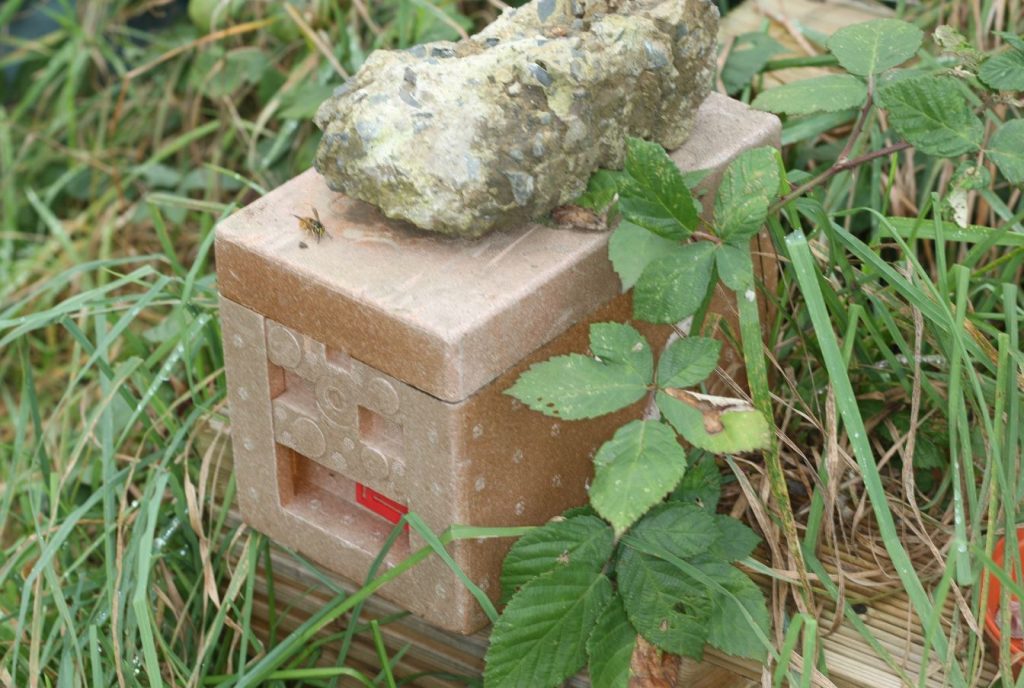
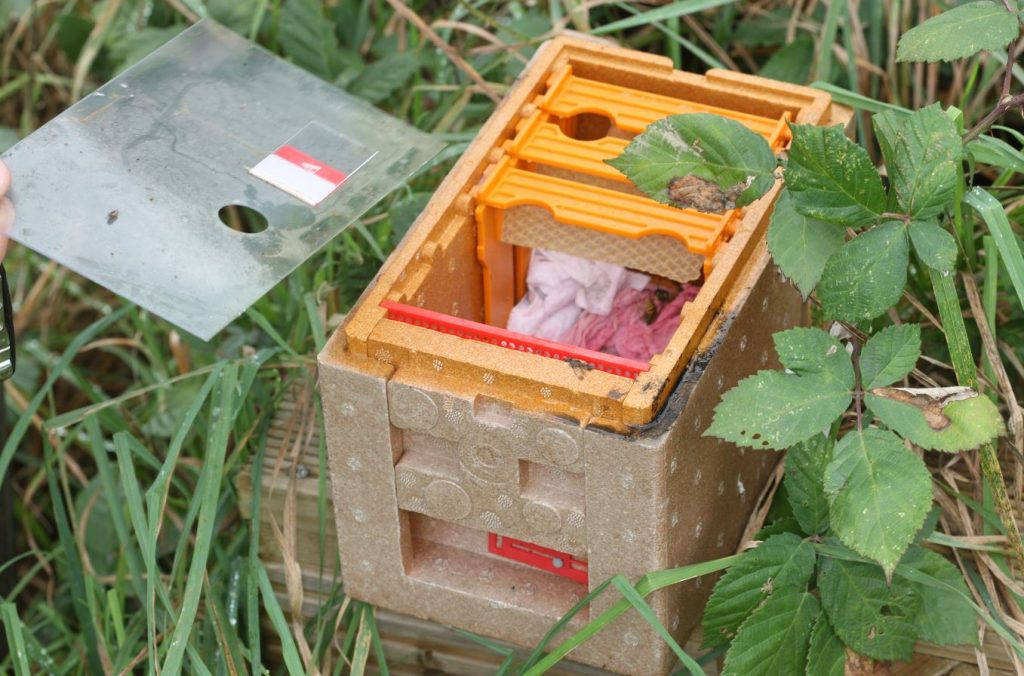
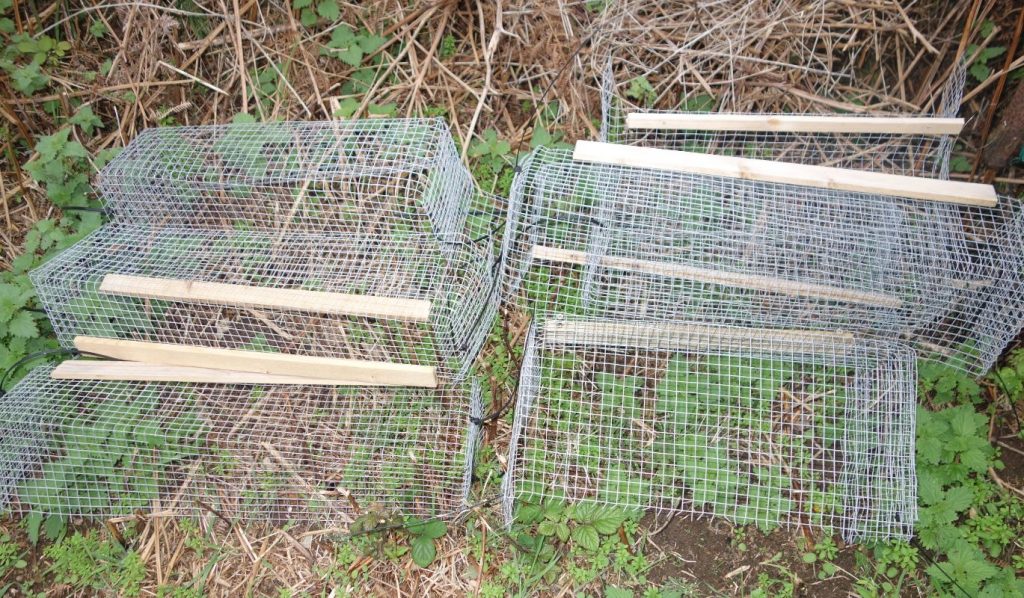
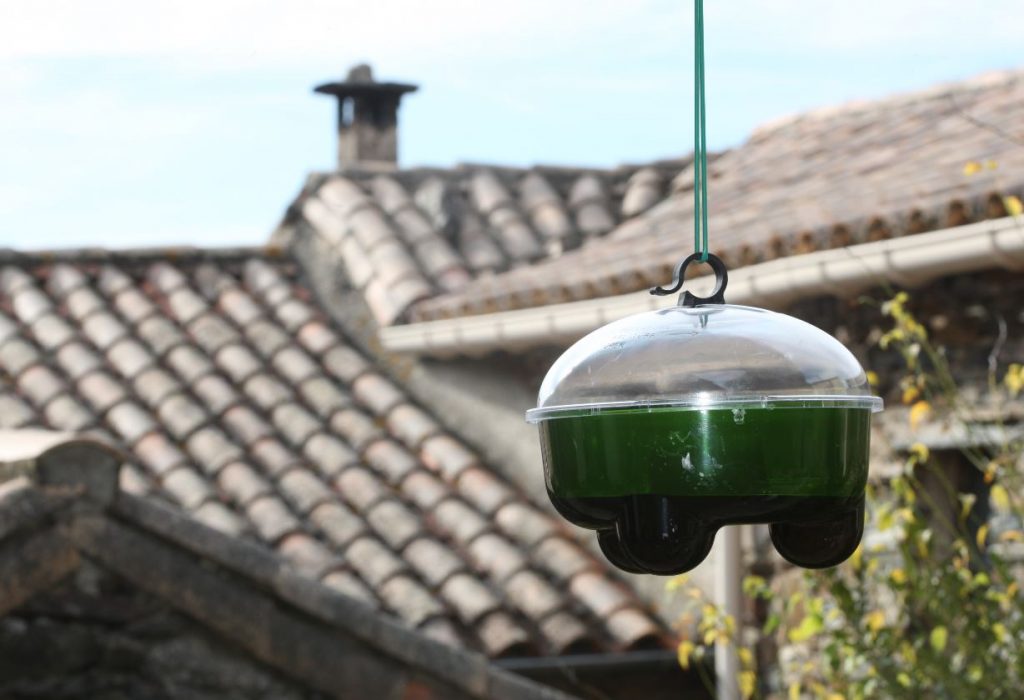
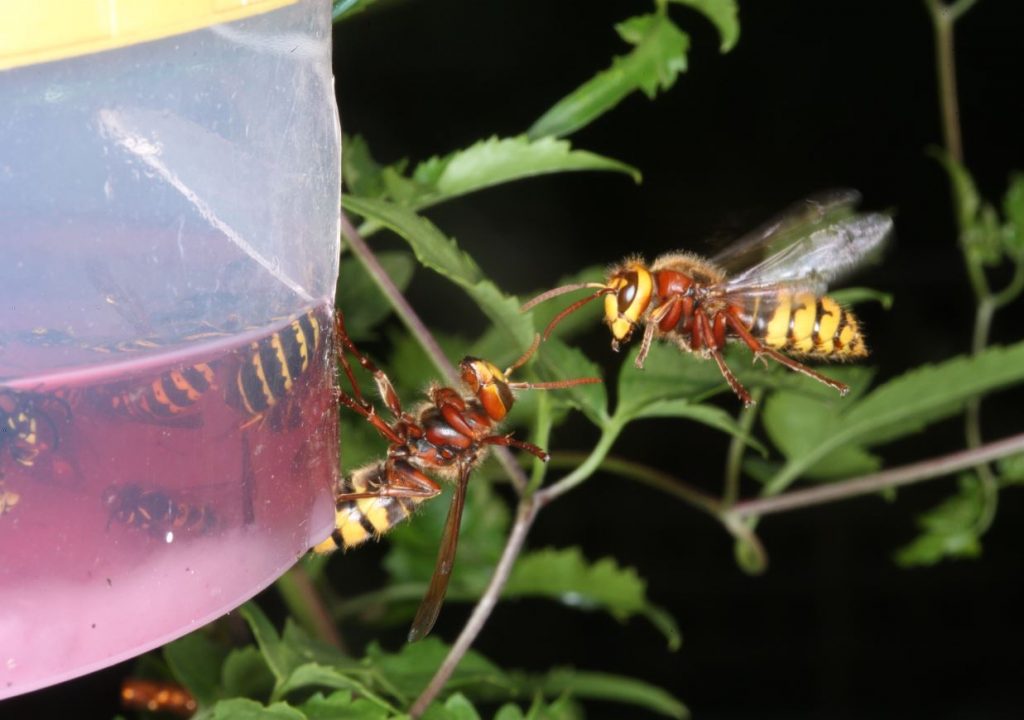
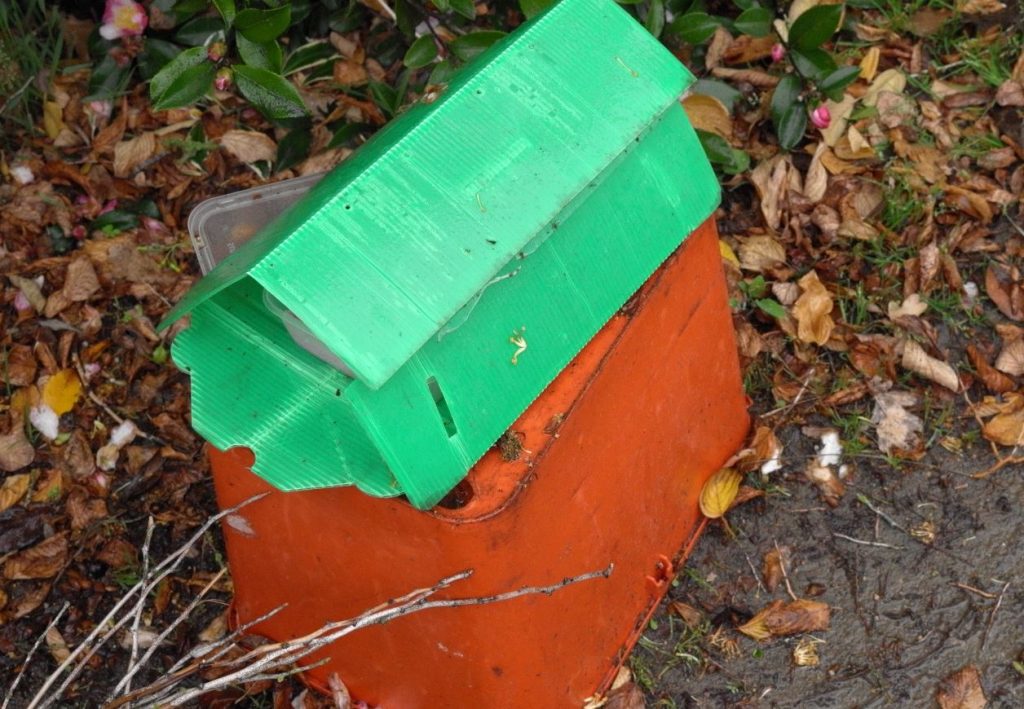
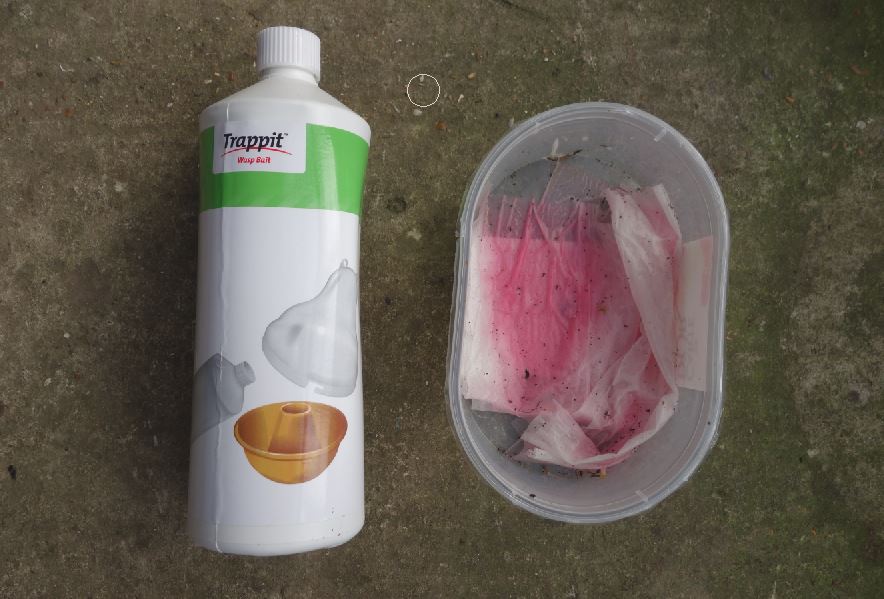
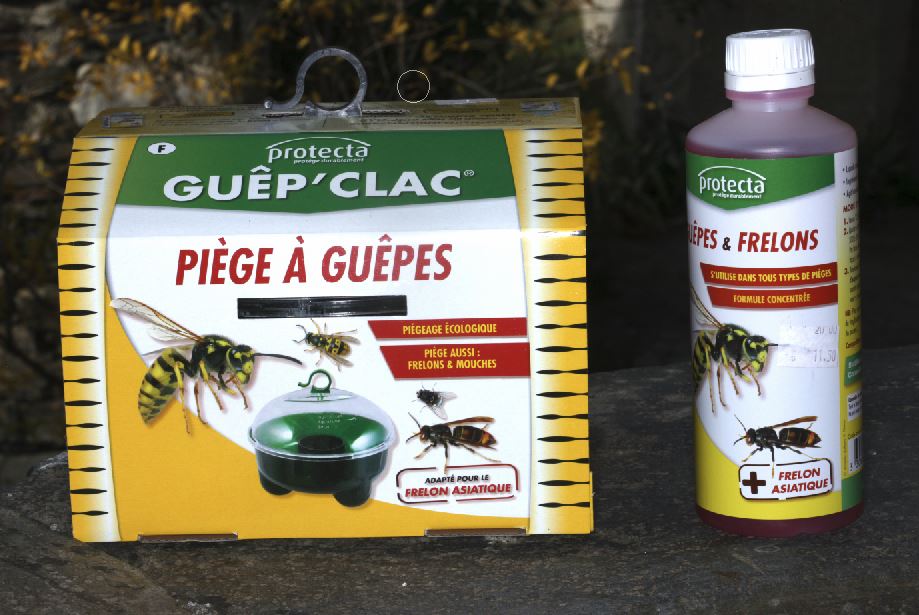
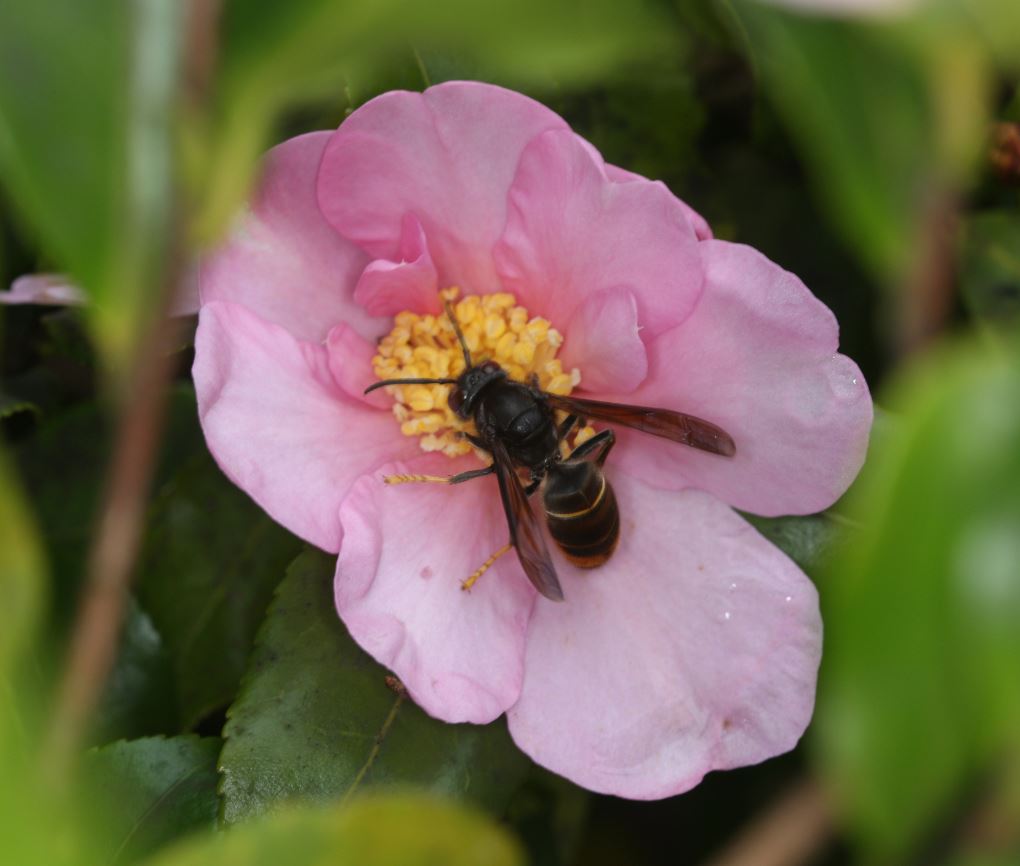
FOOD SOURCES: Asian hornets have a sweet tooth and will forage widely for nectar sources. The can be lured to bowls of open honey (but so will honeybees and bumblebees), but they are particularly attracted to winter flowering shrub Camellia sasanqua which comes in red and pink varieties. Autumn fruits are also attractive including grapes, pomegranates and apples. They particularly like apples so beware in orchards not to disturb them. They are not openly aggressive, only if they are disturbed, like wasps. Asian Hornets always like to drink water and they can be found at streamsides or on water that has collected on leaves after rainfall (see below).
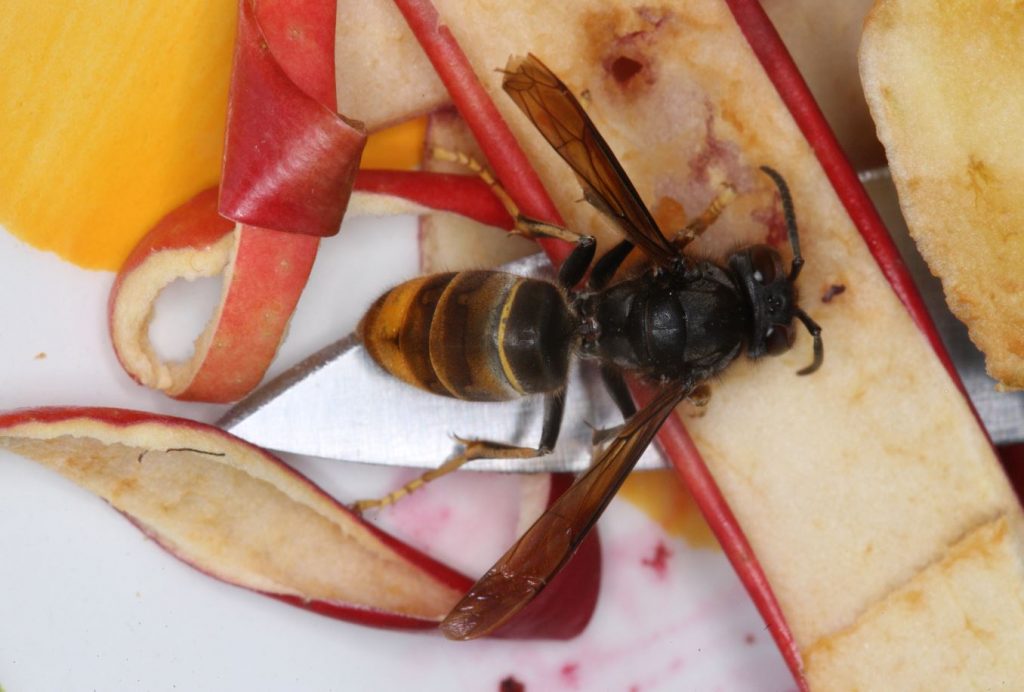
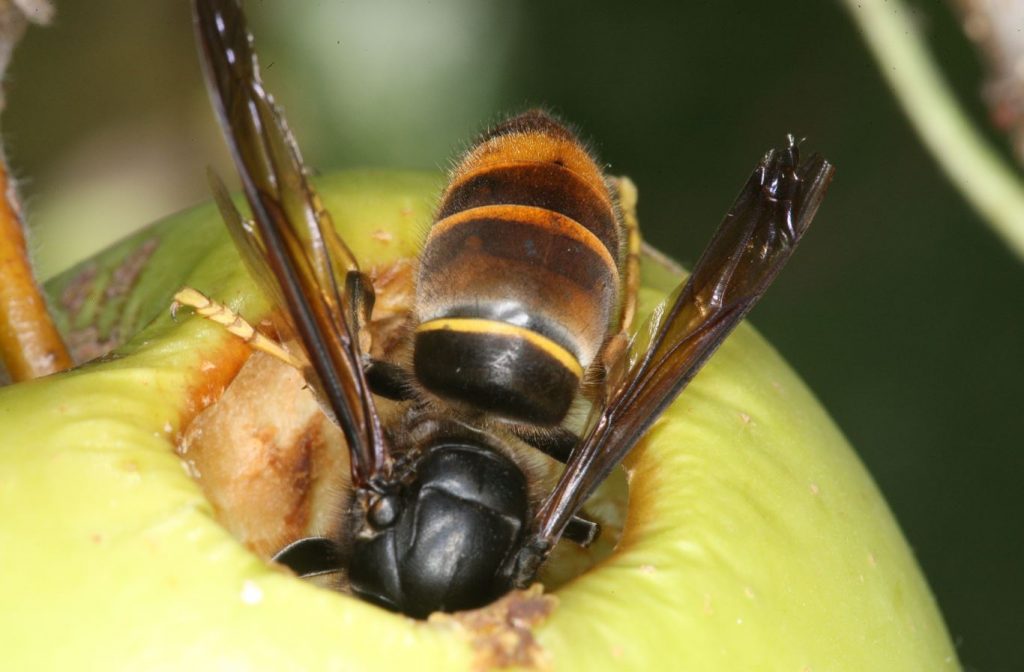
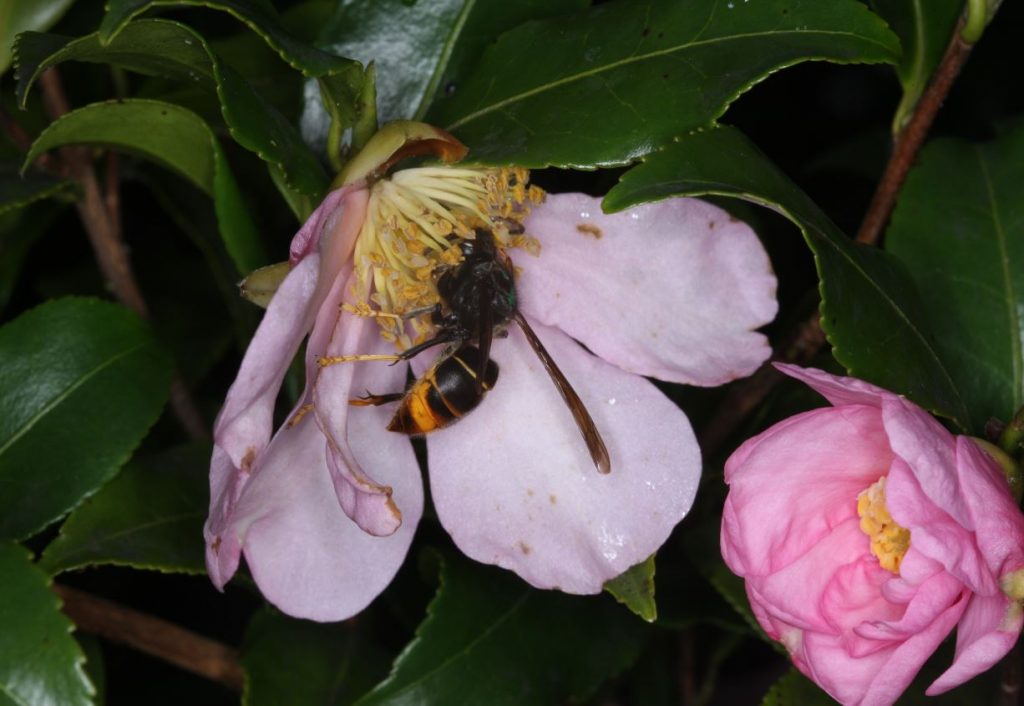
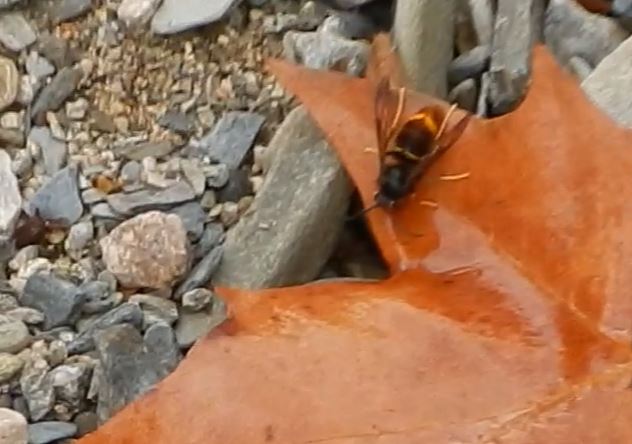
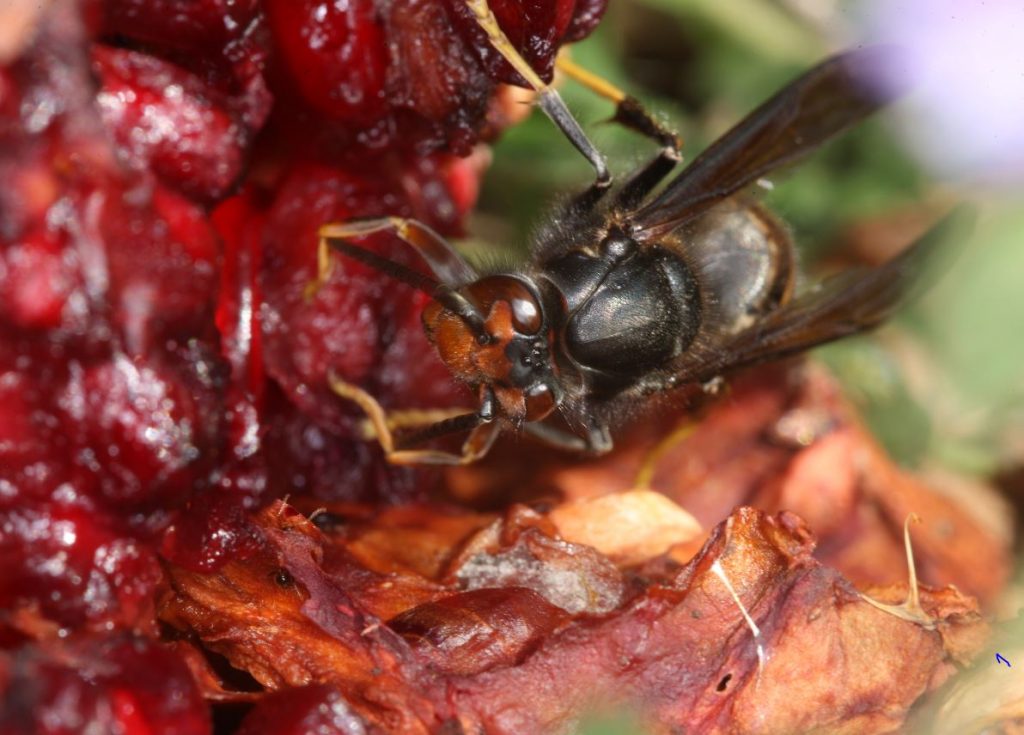
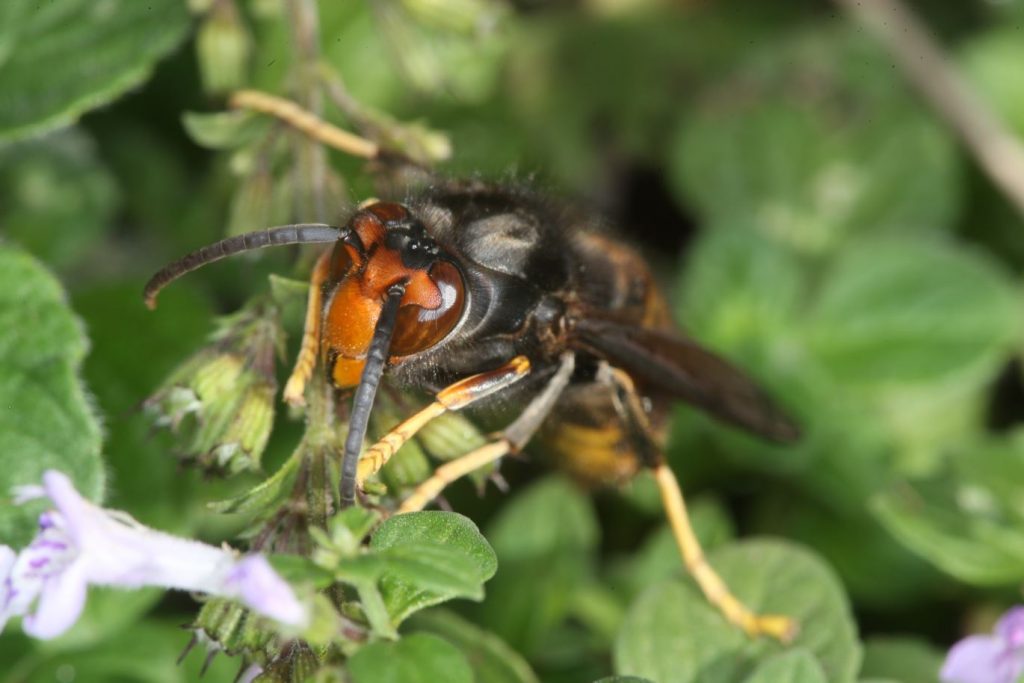
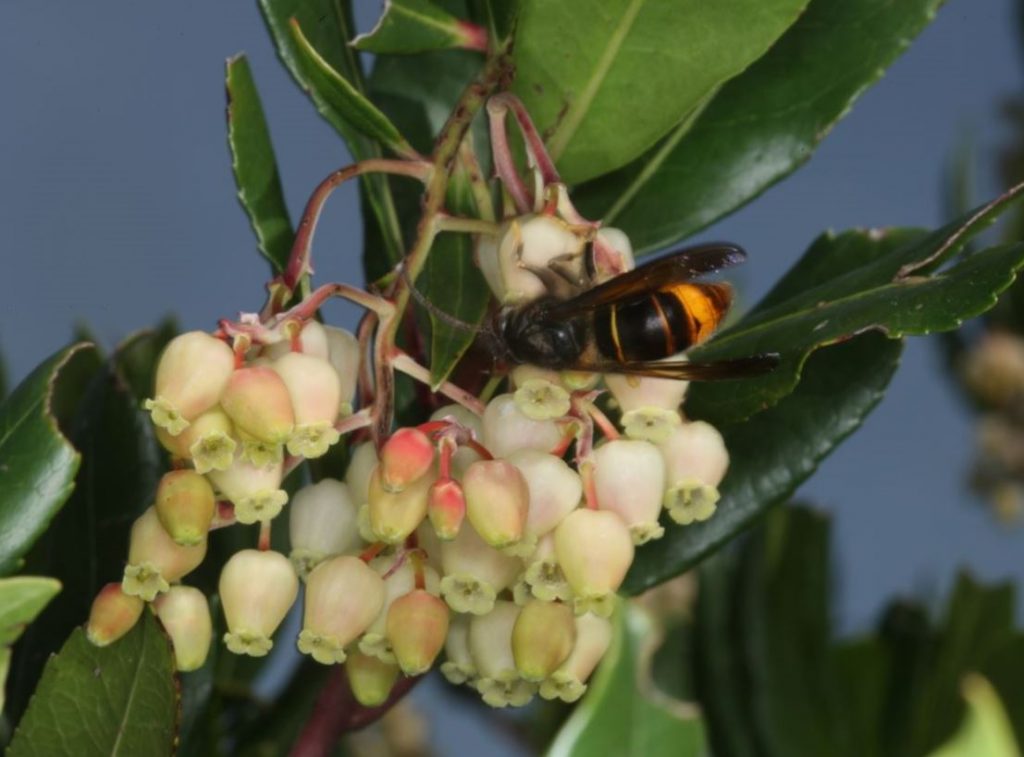
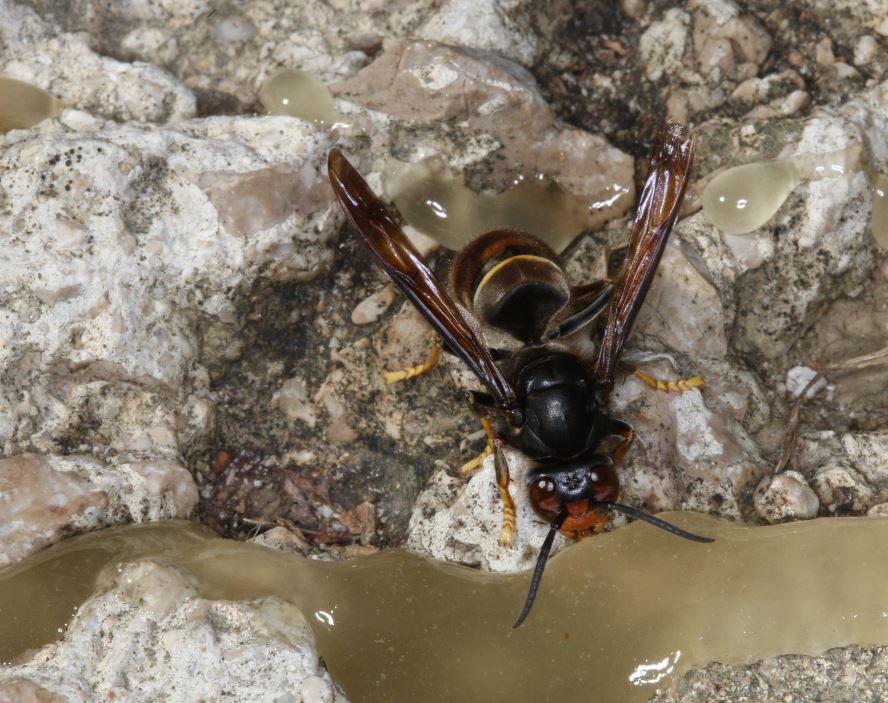
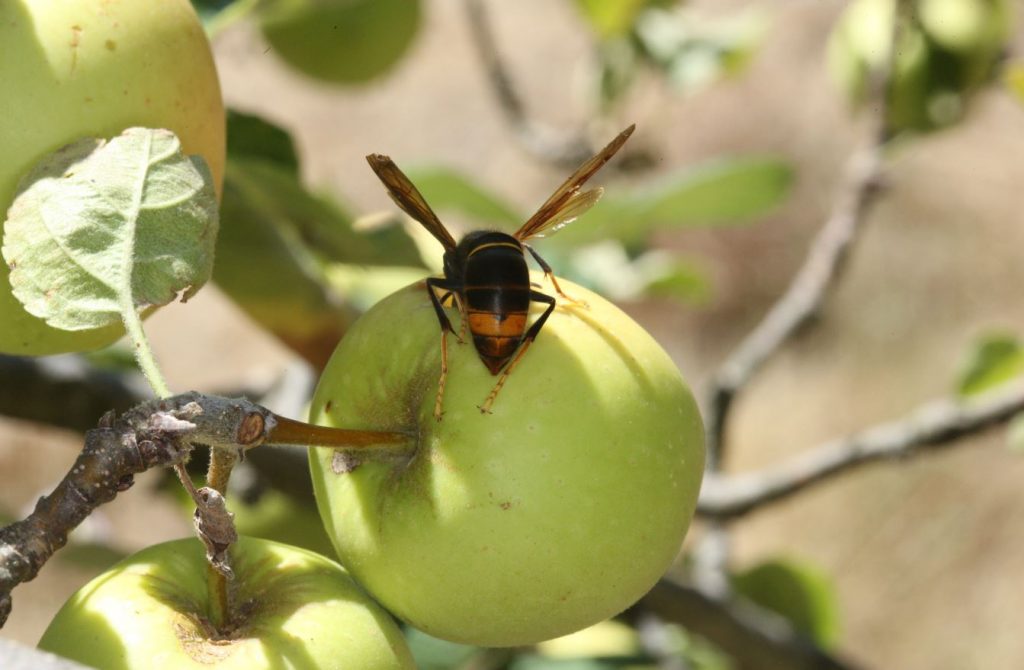
TOPICAL QUIZ on the Asian Hornet in the UK Answers on LINKS page.
| Questions (one point each, total of 20 points) |
| 1. To which Order of insects do Asian Hornets belong? |
| 2. What is the characteristic of the Order? |
| 3. In which year did they reach France? |
| 4. In which year did they reach Jersey? |
| 5. In which year did they reach mainland UK? |
| 6. In how many English counties were they detected in this year? |
| 8. In which month have the outbreaks been in the UK in the last three years? |
| 9. Can they fly the Channel? |
| 10. What is the Latin name of the Asian Hornet? |
| 11. What does velutina mean? |
| 12. How many nests do they make in a year? |
| 13. How many females are produced at the end of the season? |
| 14. Name one major feature that distinguishes Asian Hornet from other hornets? |
| 15. How many requests for ident. were received by the National Bee Unit (NBU) to 9/2018? |
| 16. What advantage do Asian Hornet have over European hornets? |
| 17. How long is their sting in millimetres? |
| 18. How thick is a bee suit against Asian Hornet? |
| 19. Should you be worried about Asian Hornet? |
| 20. Are you checking for Asian Hornet in the apiary? |

